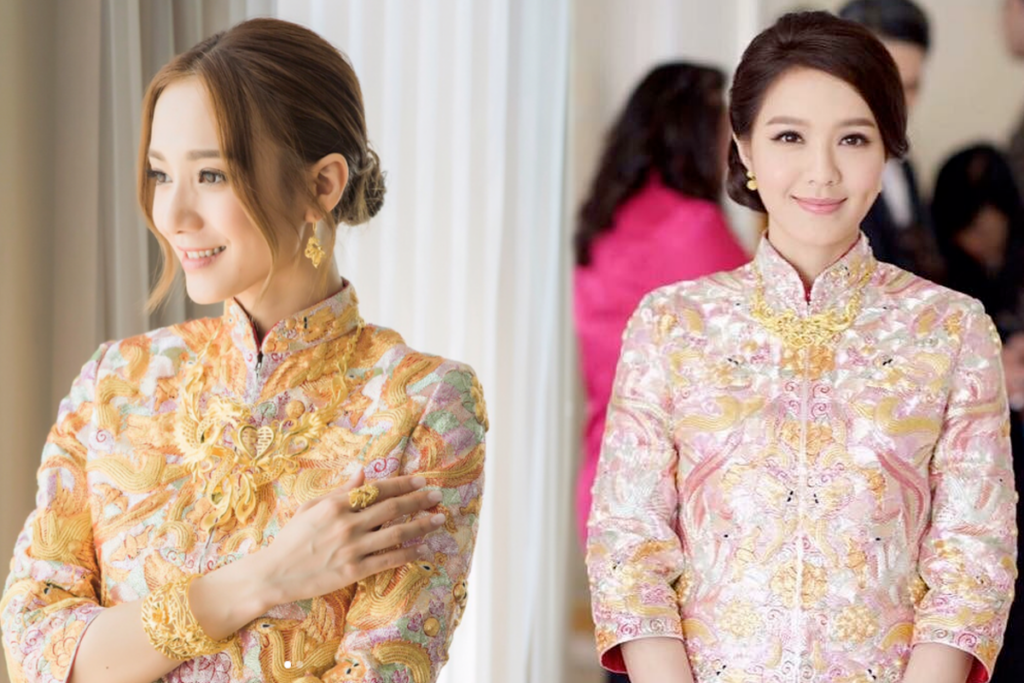The Traditional Wedding Gown for Brides in Hong Kong and China – Qungua
As mentioned in my previous blog, you may have a brief idea about the wedding gowns difference worldwide. I’ll delve further into the specifics of Chinese wedding attire starting with this post. Why do Chinese people adore using red as the foundation color? What do the motifs represent? Why are Chinese wedding dresses designed in this way? How has it changed to adapt to modern fashion? If you are also curious about these questions, read this post and see if it can help you find the answer!
Why was Gua chosen for the wedding gown?
Gua is a two-piece costume composed of the top, “Gua,” and the long skirt, “Qun.” Together, it became the traditional Chinese wedding gown called “Qungua.” Gua was the Manchurian (a Chinese ethnicity) clothing, and most people wore it daily. But why has it become the traditional wedding dress for most Chinese and Guangdong residents? It’s about an emperor. Because of his assistance to the government, a Guangdong chief minister named Liangchu earned the emperor Ming Wuzhong’s great praise during the Ming Dynasty. Since Liangchu had helped Emperor Wuzhong run the kingdom when he ascended the throne at age 15, Ming Wuzhong deeply respected Liangchu. Therefore, Emperor Wuzhong sent Liang’s daughter a dress embroidered with dragon and phoenix motifs as a wedding gift, which was only used by the royal family. Since then, it has become a unique bridal dress in Guangdong.
The Design, The Meaning, and the Implication of "Qun" and "Gua"
Qun and Gua’s designs are made up of nine pieces of cloth: Five pieces for the top, Gua: two pieces for the front, two pieces for the pair of sleeves, and one piece for the back; Four pieces for the skirt, Qun: two pieces for the front and back and two pieces for the sides.
When creating Qun and Gua, a few unspoken “rules” with implicit meanings relate to the most authentic design. The Gua’s style was often looser and always featured a wide robe and large middle sleeves, which implied: “More than enough.” Women may appear plumper and luckier due to the design. In addition, people used to have great expectations of women regarding their fertility and having more children. They always believed that women who appeared strong and plump would be able to live up to these expectations. Therefore, the Gua was designed in a loose style to match the public’s expectations of women at that period.


Qun’s design is also loose because it was created with a similar concept. Yet, it has a crucial point: the hem must be flat and even, which has stayed the same even though tailors need to adjust some design elements to keep up with contemporary fashion. The hem of the skirt represents life after marriage in the traditional meaning. The flat and even hem means the marriage of the couple would be stable and free of ups and downs. It also serves as a blessing to all the new get-married brides.
However, Qungua’s designs underwent a significant transformation to fit into the modern fashion market. For instance, the first Quagua had a red skirt and a black top. Even so, there were fewer embroidery details, and the top was made longer and looser. However, the popularity of wearing red tops with red skirts grew in the 1960s. The top had a slim-fit cutting and mid-sleeve design in place of the previous long, baggy style, which is also the design of most of the Qungua in this modern era.
To Be Continued…
It’s just a portion of stories about Qungua after sharing these tons of information. I’ll discuss the Qungua’s categories and pattern significance in the following blog. If you’re interested to learn more, please look forward to my future blog!
